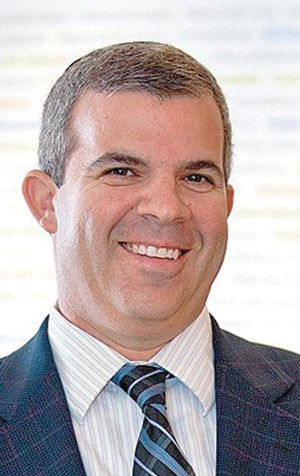Admitting mistake is first step toward healing
Published June 29, 2017
In Parshat Chukat, we read the well-known story about when the Israelites complain about lack of water. God tells Moses to speak to the rock, and water will come forth. In a moment of anger and frustration, instead of speaking to it as God instructed, Moses hits the rock with his staff. As a result of this mistake, God tells Moses that he and Aaron will not be able to enter the Promised Land. They don’t get a second chance.
We also read what is perhaps a lesser-known story in this week’s Torah reading. Again, the Israelites speak out against God, and Moses is complaining about the lack of bread and water in the wilderness. This time, God sends fiery serpents, and many Israelites are bitten and die. The Israelites plead with Moses to intercede on their behalf, and he does. As a remedy, God instructs Moses to make a bronze serpent and mount it on a pole. Anyone bitten by a snake would look at the bronze serpent and be healed.
There are several commentaries on this incident with the serpents. One topic regards the healing power of this bronze serpent on the pole. The Mishnah says that by looking up at the snake, people’s thoughts were directed upward toward heaven and thereby kept their hearts in service to God.
The mystical commentary known as the Zohar says that the first step toward repentance and forgiveness is to acknowledge that a mistake was made and that the punishment is deserved. The bronze serpent reminded people of the actual fiery serpents and made them think long and hard about their sins, which caused the snakes to appear in the first place.
When I read the story, I imagine the Israelites looking into the eyes of the bronze serpent and seeing a reflection of themselves, realizing that they made a mistake and committing themselves to learning from this mistake and making better choices in the future.
This is in stark contrast to Moses who makes his own mistake by disobeying God and hitting the rock. Moses does not have the opportunity for healing. Perhaps this is because he did not come to terms with his transgression.
Many of us are in need of healing. This may take the form of physical or spiritual healing or some combination of the two. Each of us was created in the image of God, but we are far from perfect and often make choices that require healing of body and/or healing of mind and spirit.
The story of the serpent reminds us that healing, forgiveness and recovery is possible. However, one important step in the healing process is for us to acknowledge our mistakes, look at ourselves in the mirror and find the inner strength to take steps necessary for physical and spiritual growth.
Just like the Israelites had to look at the bronze snake and come to terms with their transgressions, we must come to terms with our sins and mistakes for true healing to take place.
Shabbat Shalom.
Rabbi Brad Horwitz is director of Jewish engagement and adult programs at the Jewish Community Center of St. Louis. He is also a member of the St. Louis Rabbinical Association.
















